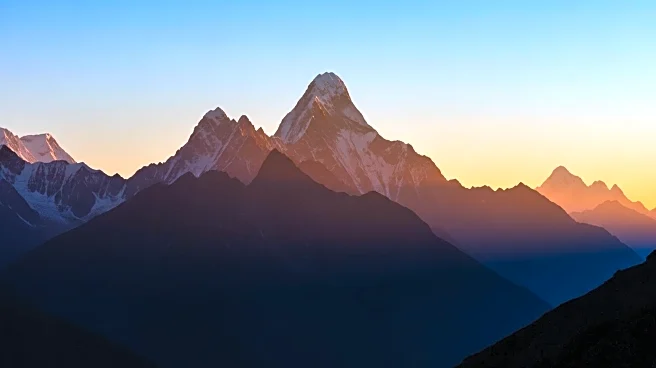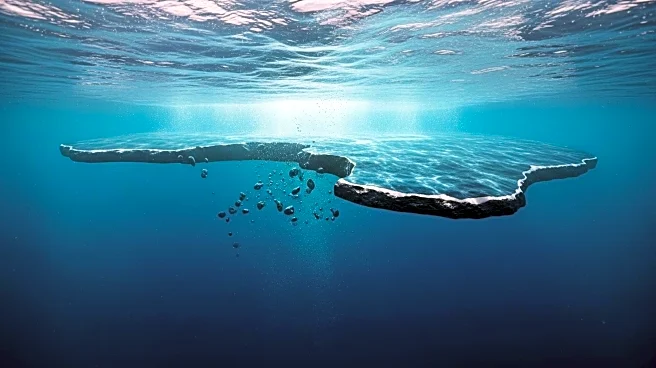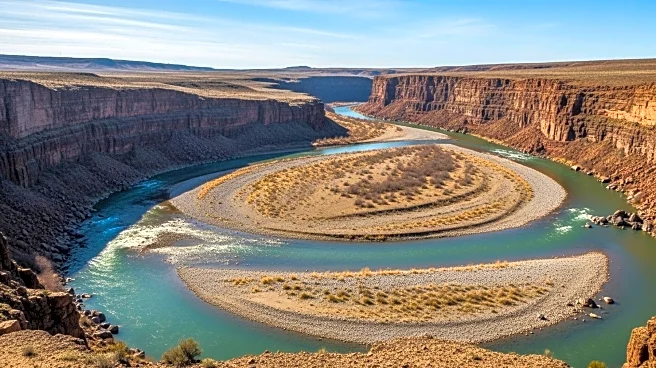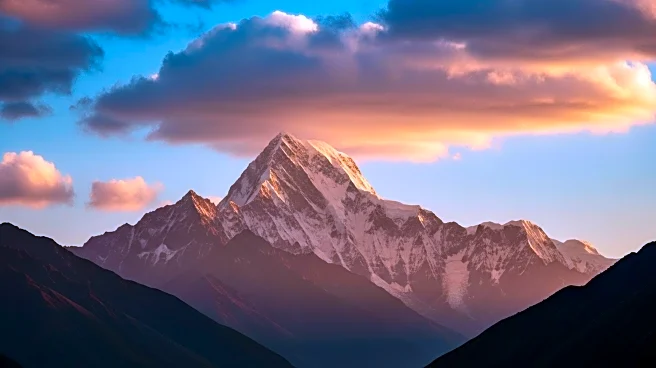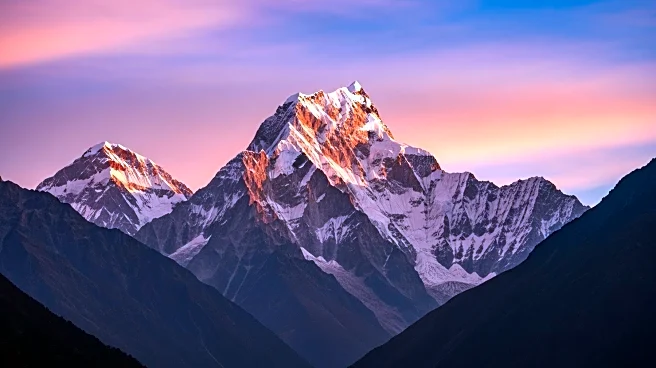What's Happening?
Recent research has challenged a century-old theory regarding the geological structure beneath the Himalayas. Traditionally, it was believed that the doubling of Earth's crust due to the collision between the Indian and Eurasian tectonic plates was solely responsible for supporting the Himalayas and the Tibetan Plateau. This theory, proposed by Swiss geologist Émile Argand in 1924, suggested that the crusts of the Indian and Asian plates were stacked, stretching deep beneath the Earth's surface. However, new findings indicate that the rocks in the crust become molten at depths of around 25 miles, making it implausible for such a structure to support the mountains. The study, led by Pietro Sternai from the University of Milano-Bicocca, reveals the presence of a mantle layer sandwiched between the crusts, providing the necessary rigidity and strength to sustain the Himalayas' elevation.
Why It's Important?
This discovery has significant implications for our understanding of mountain formation and geological processes. By identifying a mantle layer between the crusts, the study offers a more accurate model of the Earth's structure in this region, which could influence future geological research and education. The findings challenge long-held beliefs and could lead to revisions in textbooks and scientific literature. Additionally, understanding the true structure beneath the Himalayas is crucial for assessing seismic risks and planning infrastructure projects in the region, potentially impacting millions of lives.
What's Next?
The study's authors anticipate further scrutiny and debate within the scientific community, as the new model contradicts widely accepted theories. Researchers may conduct additional simulations and gather more seismic data to validate these findings. The implications of this research could extend to other mountain ranges, prompting geologists to re-evaluate similar geological structures worldwide. As the scientific community digests these findings, there may be increased collaboration to explore the broader impacts on tectonic theory and mountain formation.
Beyond the Headlines
The revelation of a mantle layer beneath the Himalayas not only challenges existing geological theories but also highlights the dynamic nature of scientific inquiry. It underscores the importance of questioning established ideas and the role of technology in advancing our understanding of Earth's processes. This study exemplifies how computational models can provide insights that were previously unattainable, paving the way for future breakthroughs in geophysics.
